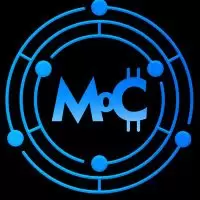All-time High
All-time Low
Volume(24h)
1.37B
Turnover rate
10.53%
Market Cap
13.0544B
FDV
37.2B
Circulating supply
3.51B
Total supply
10B
Max supply
10B
Contracts
Contracts
Explorers
Currency Calculator
{{conversion_one_currency}}
{{conversion_two_currency}}
| Exchange | Pairs | Price | Volume (24h) | Volume % | Confidence | Liquidity Score | Earn |
|---|---|---|---|---|---|---|---|
| {{val.marketPair}} | {{val.price}} | {{val.volume24h}} | {{val.volumePercent}} | Low Moderate High | {{val.effectiveLiquidity}} | Buy / Sell | |
Community sentiment

26%
74%


Bullish

Bearish
 NEW: Sygnum Bank launches SUI services, expanding institutional access to the $SUI blockchain as its official banking partner.
NEW: Sygnum Bank launches SUI services, expanding institutional access to the $SUI blockchain as its official banking partner. 
| Exchange | Pair | Price | Volume (24h) | Volume % | Confidence | Liquidity Score | Earn |
|---|---|---|---|---|---|---|---|
| {{val.marketPair}} | {{val.price}} | {{val.volume24h}} | {{val.volumePercent}} | Low Moderate High | {{val.effectiveLiquidity}} | Buy / Sell | |
About Sui
Where Can You Buy Sui (SUI)?
Sui Mainnet will launch on May 3, 2023.
How Is the Sui Network Secured?
At launch, Tusk and Narwhal were the default consensus algorithms used by Sui, although Bullshark replaced Tusk as the primary option in August 2022. The move was made to reduce latency issues, and to ensure that validators with lower processing speeds would still be able to contribute to the project. Tusk can still be used via updating the source, however. In short, Narwhal is used as a mempool to ensure that the data submitted to the consensus is available, and Bullshark (or Tusk) then sets the standard for arranging that data so the consensus engine can read it. This is part of the directed acyclic graph (DAG) mempool, which is yet another innovation Sui offers. Coupled with its innovative scaling solution, it will presumably allow the blockchain to reach transaction speeds of over 297,000 [transactions per second](https://coinmarketcap.com/alexandria/glossary/transactions-per-second).
How Many Sui (SUI) Coins Are There in Circulation?
Sui is yet to release details about its native SUI token, which is to go live upon the [mainnet](https://coinmarketcap.com/alexandria/glossary/mainnet)launch. It will be used for [gas](https://coinmarketcap.com/alexandria/glossary/gas) fees and to pay for the storage fund. This fund compensates future validators for the costs of previously stored on-chain data. With this upfront-payment model, higher rewards are paid out to validators when the demand for storage is high.
What Makes Sui Unique?
Through features such as horizontal scaling, composability, sparse replay, and on-chain storage, Sui’s architecture solves pain points common to first generation blockchains. Horizontal Scaling On the Sui network, each group of transactions process in parallel, as opposed to the bottlenecking that occurs in some earlier blockchains due to any lack of distinction between the various objects, resources, accounts, and other components. Composability In Sui, unlike most other blockchains, one can directly pass an asset (such as an NFT), directly into a function argument. Sui’s object-centric approach also allows for more esoteric data structures, and the ability to store assets inside such data structures, or in an asset itself. Sparse Replay Naturally, a blockchain provides a ledger of every single transaction. For a Sui-specific example, game builders don’t need to track transactions interacting with unrelated dApps. Because querying on-chain data can be expensive, products on Sui will be able to follow the evolution of the objects in this game, without digging out the data from the Merkle tree. On-Chain Storage Because assets are directly stored as objects on the Sui blockchain, they are never subject to Merkle tree indexing. Storing assets directly on-chain is used in tandem with conventional means, such as IPFS, to scale the problem of on-chain storage, as it is much cheaper to directly update assets on-chain.
Who Are the Founders of Sui?
Mysten Labs, the original contributor to Sui, was founded by by former executives/lead architects of Meta’s Novi Research (the team responsible for Diem blockchain and Move programming language): Evan Cheng; Adeniyi Abiodun; Sam Blackshear; George Danezis; Kostas Chalkias.
What Is Sui (SUI)?
Sui is a first-of-its-kind Layer 1 blockchain and smart contract platform designed from the bottom up to make digital asset ownership fast, private, secure, and accessible to everyone. Its object-centric model, based on the Move programming language, enables parallel execution, sub-second finality, and rich on-chain assets. With horizontally scalable processing and storage, Sui supports a wide range of applications with unrivaled speed at low cost. Sui is a step-function advancement in blockchain and a platform on which creators and developers can build amazing, user-friendly experiences.
Sui News
-

XRP and Solana ETFs are gaining traction, especially in Europe. 21Shares is at the forefront, but BlackRock is holding back. What does this mean for the future of crypto ETFs?
Aug 12, 2025 at 01:09 pm
-

A deep dive into the LayerZero Foundation's attempt to acquire Stargate Bridge and the community's surprising rejection of the deal.
Aug 12, 2025 at 05:48 am
-

Dive into the Floki Inu price analysis, technical indicators, and future predictions. Is Floki ready for a parabolic surge, or is a correction on the horizon?
Aug 12, 2025 at 05:45 am
-

Worldcoin (WLD) faces a complex landscape with regulatory scrutiny and fluctuating market sentiment. Is it a buy or a hold? Let's dive in.
Aug 10, 2025 at 05:06 pm
-

Decoding SUI's price action amidst token unlocks and banking partnerships. Is it a buy or a wait-and-see game?
Aug 10, 2025 at 05:06 pm
-

Dive into the potential of TRX, SUI, and MAGACOIN as underdogs set to dominate the 2025 crypto market. Discover key insights and trends.
Aug 10, 2025 at 12:00 pm
-

Sui (SUI) is making waves again, fueled by Swiss banking partnerships and growing investor confidence. Can it break through resistance and reach a new all-time high?
Aug 10, 2025 at 05:00 am
-

Exploring the potential of TRX, SUI, and Magacoin Finance as key players in the altcoin market, driven by growing utility, institutional interest, and innovative technology.
Aug 09, 2025 at 10:11 am
-

Sygnum Bank and the Sui Foundation are expanding institutional access to SUI, marking a turning point in regulated blockchain adoption.
Aug 09, 2025 at 05:21 am
Similar Coins
























































































Twitter
GitHub
Close